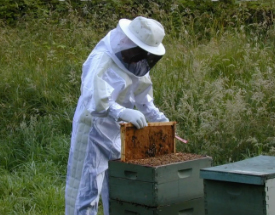Beavers are generally known as the engineers of the animal world. In fact the beaver is MIT's mascot! But honeybees might be better engineers than beavers! And in this lesson involving geometry in interesting ways, you'll see why! Honeybees, over time, have optimized the design of their beehives. Mathematicians can do no better. In this lesson, students will learn how to find the areas of shapes (triangles, squares, hexagons) in terms of the radius of a circle drawn inside of these shapes. They will also learn to compare those shapes to see which one is the most efficient for beehives. This lesson also discusses the three-dimensional shape of the honeycomb and shows how bees have optimized that in multiple dimensions. During classroom breaks, students will do active learning around the mathematics involved in this engineering expertise of honeybees. Students should be conversant in geometry, and a little calculus and differential equations would help, but not mandatory.


